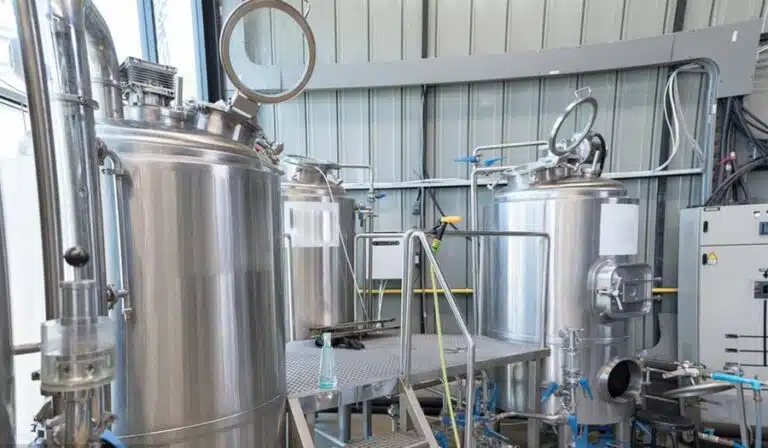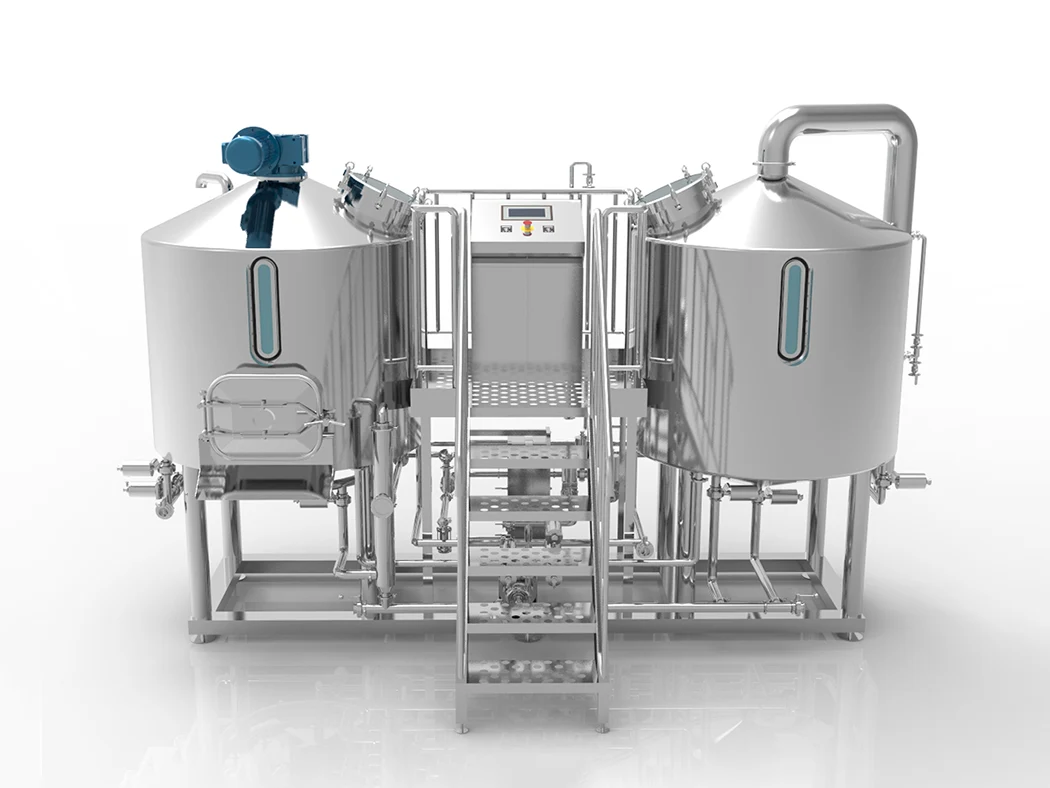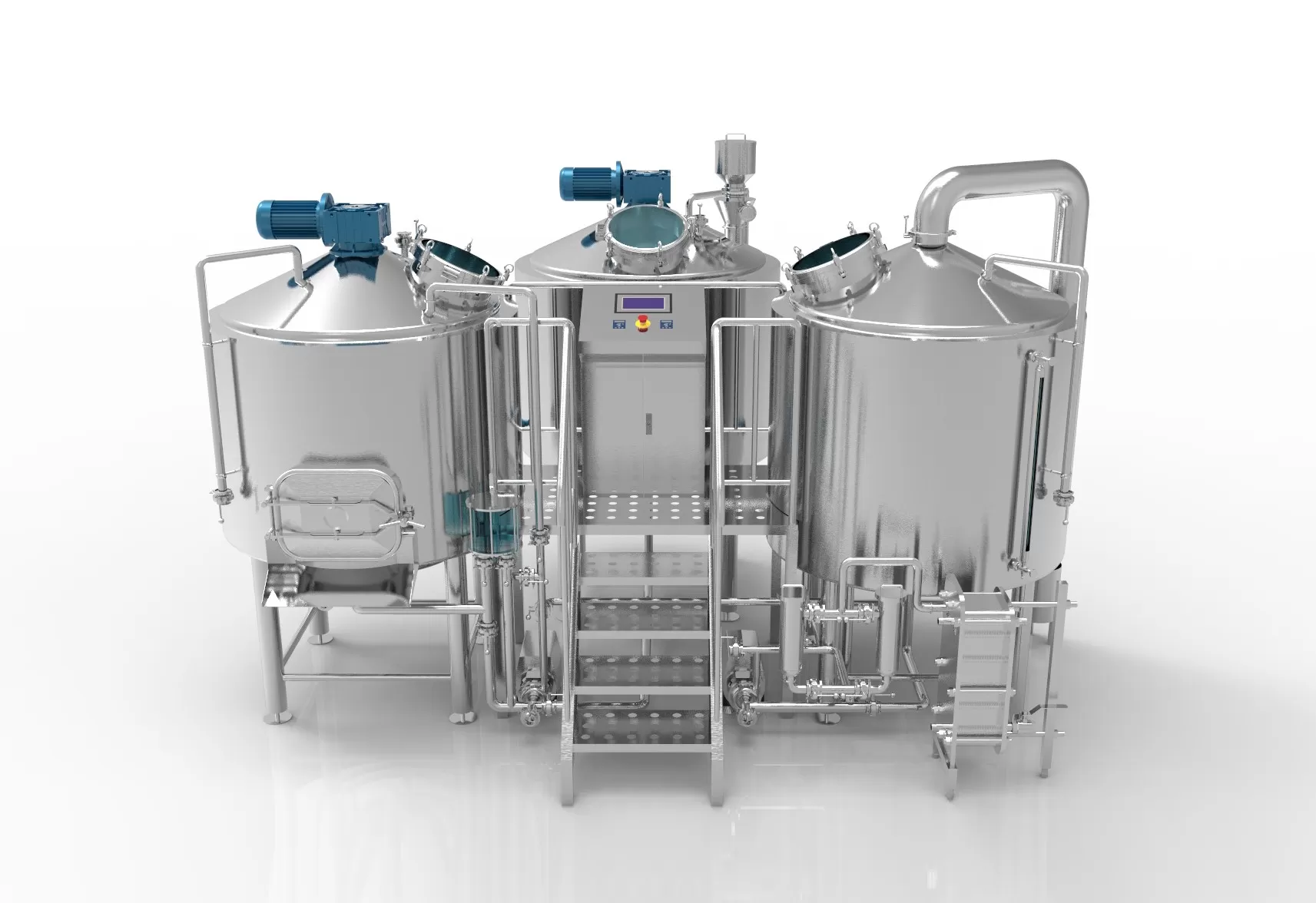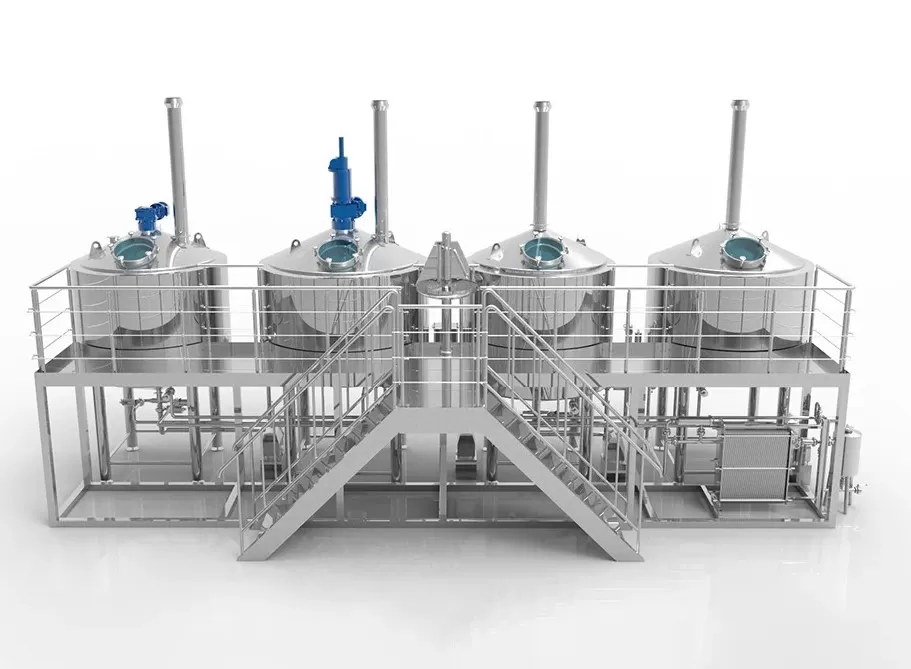Kombucha, a health beverage originating in East Asia that has gained immense popularity in Europe and North America, has rapidly emerged in the global beverage market in recent years. Its core appeal lies in the organic acids, probiotics, and trace nutrients produced through natural fermentation, offering not only a unique taste but also health benefits such as detoxification and digestive support. With the growing consumer demand for health-oriented drinks, an increasing number of companies are entering the kombucha production space. However, as production capacity expands and the need for product standardization rises, traditional manual or semi-manual production methods are increasingly revealing their limitations—low efficiency, high risk, and challenges in maintaining consistent quality. Against this backdrop, automated 콤부차 양조 장비 has emerged as a vital tool for transforming modern kombucha production.
Overview of the basic process of kombucha brewing
Before discussing automation, it is helpful to understand the basic process of traditional kombucha brewing to understand how equipment intervenes in each link:
- Tea preparation: boiling water, brewing tea, adding sugar;
- Cooling and filtering: cooling the tea liquid to a suitable fermentation temperature;
- Inoculation and fermentation: adding SCOBY (symbiotic biofilm) and starter liquid;
- ermentation control: maintaining a certain temperature, humidity, and ventilation environment;
- End of primary fermentation: about 7-14 days, adjusted according to the environment and taste;
- Secondary fermentation (optional): adding juice, spices and other condiments;
- Filtration and bottling: removing biofilm and precipitation, filling and sealing;
- Packaging and delivery: labeling, testing, packing, etc.

Core components of automated kombucha brewing equipment
Automatic tea brewing system
- High-precision temperature control heating system;
- Timed tea addiction and quantitative sugar addiction;
- Filtration device for assembly line tea brewing tank.
Intelligent cooling and liquid storage system
- Closed cycle cooling;
- Food grade 304 or 316 stainless steel liquid storage tank;
- Automatic filtration and delivery pump system to reduce manual handling pollution.
- Automatic addition of SCOBY and starter liquid;
- Built-in temperature and humidity control, PH monitoring, CO₂ release device;
- Multi-stage fermentation program can be set to finely control the parameters of each stage.
Secondary fermentation seasoning system
- Multiple juice or spice injection units;
- The mixing tank has stirring disinfection, and pressure protection functions;
- Can be connected to the filling line for a seamless connection.
Intelligent filling and labeling system
- Negative pressure filling, aseptic filling technology;
- Automatic labeling, code scanning, bottle cap detection;
- Connected with quality detectors, unqualified bottled products can be eliminated in real-time.
Data acquisition and remote control system
- Central control touch screen;
- PLC program control system;
- Can remotely monitor the equipment operation status and automatically record batch data.
The core value of automated kombucha equipment
- Greatly improve production efficiency:Automated equipment realizes continuous production of key links such as tea preparation, fermentation, and filling through process integration and intelligent control. Compared with traditional manual operation, the output is doubled, manpower is saved, and the construction period is shortened, which is the basis for supporting large-scale market demand.
- Ensure product consistency and stability.:The automated system can accurately control key parameters such as temperature, pH value, sugar content, time, etc. in each link, avoiding the randomness of manual operation, thereby ensuring that the taste, bubble feeling, and live bacteria volume of each batch of kombucha are highly consistent.
- Effectively reduce food safety risks.:The closed system, CIP automatic cleaning, high-temperature sterilization, and other functions make the entire production process more in line with food-grade safety specifications. Automation reduces manual contact links and reduces the risk of cross-contamination and microbial contamination.
- Strengthen traceability and quality tracking capabilities.:Modern automated equipment is equipped with data recording and tracking functions, which can record the entire process of each production batch (for example: temperature curve, fermentation time, raw material batch, etc.), providing solid support for product traceability, quality supervision, and brand credibility.
- Reduce long-term operating costs.:Although the initial investment in automated equipment is high, in the long run, it can significantly reduce labor costs, rework losses, training costs, and risk losses caused by food safety accidents. Equipment maintenance and upgrades are also gradually standardized, and costs are controllable.
- Help brands go high-end and international.:Automated production improves the consistency of corporate image and product quality, making the brand more scalable and internationally competitive. In terms of export business, chain brands, capital financing, etc., automated production is an important manifestation of the brand’s “industrial maturity”.

Challenges of automated kombucha equipment
The activity of strains is easily limited by the control system.
The core of kombucha is the activity of SCOBY (symbiotic bacterial membrane). Automated systems usually emphasize the standardization of parameters such as airtightness, temperature control, and acid control, but excessive control may inhibit the natural reproduction and metabolism of strains, affect the number and type of probiotics, and ultimately weaken the “activity” and health value of the product.
Flavor personality is difficult to retain
Automation emphasizes uniform taste and efficiency, which is certainly important in large-scale production, but the original flavor characteristics of kombucha often come from subtle manual adjustments (such as fine-tuning different tea ratios and fermentation time). Blindly pursuing standardization may lead to flavor convergence, loss of brand personality, and difficulty in satisfying consumers’ preferences for “handmade” and “natural” feelings.
높은 초기 투자 비용
High-quality automated equipment usually requires a large initial investment, including procurement costs, installation and commissioning, and training costs. This is a significant burden for start-ups or brands with unstable production. In addition, the maintenance and parts replacement cycles of some imported equipment are long and costly, and they also need to be included in financial planning.
Higher skill threshold for operators
Although the automation system reduces the demand for traditional labor, the technical requirements for operators are higher. Employees need to have certain equipment operation, troubleshooting, data reading, and other capabilities, especially in the equipment error or maintenance stage. Lack of professional training may lead to stagnation of the entire line.
Limited customization and flexible production
Consumers are increasingly favoring specialty products with diverse flavors, seasonal restrictions, and small batches. However, most automation systems lack flexibility in switching flavors, changing packaging specifications, and adjusting fermentation conditions. Frequent switching may lead to reduced efficiency and even affect equipment stability.
Digital systems are highly dependent and the risk of failure is concentrated.
High automation means that the entire production process is highly dependent on software systems (such as PLC, SCADA, etc.) and sensor networks. Once a problem occurs in the central control system, it may lead to the scrapping of batches of products or production interruptions. Equipment maintenance, system backup, and disaster recovery mechanisms have become key problems in the operation and maintenance of automated factories.
Compatibility issues with regulations/certification systems
Different countries and regions have different regulatory requirements for food production, such as the EU’s labeling requirements for fermented beverages, the US FDA’s food tracking system, and domestic SC certification. The factory settings of some automation equipment may not be fully compatible with local regulations, which may lead to certification obstacles or rectification costs after production.

Future development trend of automated kombucha equipment
Modular and scalable design becomes mainstream
One of the development trends of 콤부차 양조 장비 in the future is to evolve in the direction of modularization and scalability. Modularity means that the whole set of equipment can be freely combined like building blocks to meet the needs of enterprises of different sizes and different process requirements. For start-up brands or small-batch producers, only basic units, such as automatic tea brewing modules and single fermentation tanks, need to be invested in the early stage; and as the output increases, expansion modules such as fermentation units, filling lines, and seasoning systems can be added as needed. It greatly reduces the pressure of initial investment, and also adapts to the diversified needs of the market, becoming an important direction for future research and development of equipment manufacturers.
Intelligent control system drives the evolution of "craft brewing"
With the widespread application of artificial intelligence, the Internet of Things, and big data technologies in the food industry, kombucha brewing equipment is moving towards intelligence. The brewing equipment of the future will not only be an automated tool but also an intelligent system with “judgment”. By integrating temperature sensors, PH probes, CO₂ monitoring modules, and image recognition systems, the equipment can analyze the fermentation status in real-time, and automatically adjust parameters such as temperature, fermentation time, and secondary seasoning ratio according to the algorithm to achieve true “craft brewing control”.
In addition, the intelligent central control platform will support remote monitoring, data recording, trend analysis, and abnormal alarms to help operators make more scientific decisions and ensure that each batch of kombucha achieves the ideal taste and activity.
High compatibility promotes multi-category integrated production.
Modern consumers pursue rich and diverse tastes and functional drinks. Traditional equipment that only serves a single category of kombucha has gradually failed to meet market demand. In the future, kombucha brewing equipment will pay more attention to category compatibility and process diversity. For example:
- The same fermentation tank is suitable for kombucha, lactic acid bacteria beverages, and probiotic fermented coffee;
- The flavoring system supports the addition of fruit pulp with different viscosities and granularities;
- The filling equipment can quickly switch bottle types to achieve a seamless transition from glass bottles to cans.
The concept of green and low carbon is deeply integrated into equipment design
Environmentally friendly production has become a major trend in the global food industry, and kombucha equipment is also transforming towards green manufacturing. Future brewing equipment will incorporate environmental protection concepts in the following aspects:
- Use energy-saving motors and thermal insulation technology to reduce operating energy consumption;
- Integrate solar energy or heat recovery systems to achieve renewable energy utilization;
- Optimize water use structure in the cleaning system to achieve water recycling;
- Use non-toxic and corrosion-resistant materials to increase equipment life and recycling value.




